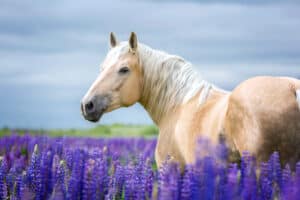
Horses are incredible animals, and there are many interesting facts about them that may astonish you. For example, did you know that horses can’t vomit or burp? Or that the tallest horse on record stood over seven feet high? Here are 10 incredible horse facts to enjoy and use to quiz your friends.
1. Horses can’t vomit or burp

A horse’s long neck and esophagus prevent it from vomiting.
©arthorse/Shutterstock.com
Horses are unable to vomit or burp because of their unique anatomy. They have a super strong sphincter (valve) placed low in their very long esophagus, making it nearly impossible for food or gas to come back up. Plus, the low angle of the esophagus connection to the stomach helps keep the sphincter even more tightly closed.
The horse’s digestive system is long and takes about 24 hours to digest food fully. They need hay or grass for fiber, grain for energy, and minerals and vitamins for overall health.
Speaking of the horse’s digestive system, do you know how many chambers a horse’s stomach has? Like humans, a horse’s stomach has only one chamber. So why ask the question at all? Because some people assume that horses have four stomach chambers as cows do. Nope! One of the incredible facts about cows is that they’re ruminants (animals with a 4-chambered stomach), but horses are non-ruminants. Though horses and cows graze on grass, their digestive systems work differently.
What’s one significant difference between a cow’s digestive system and a horse’s? Cows regurgitate their food as part of the digestive process, but horses do not. That’s because the horses’ esophagus doesn’t allow food to return to the mouth once the food has entered the stomach.
2. Horses used to be as small as house pets
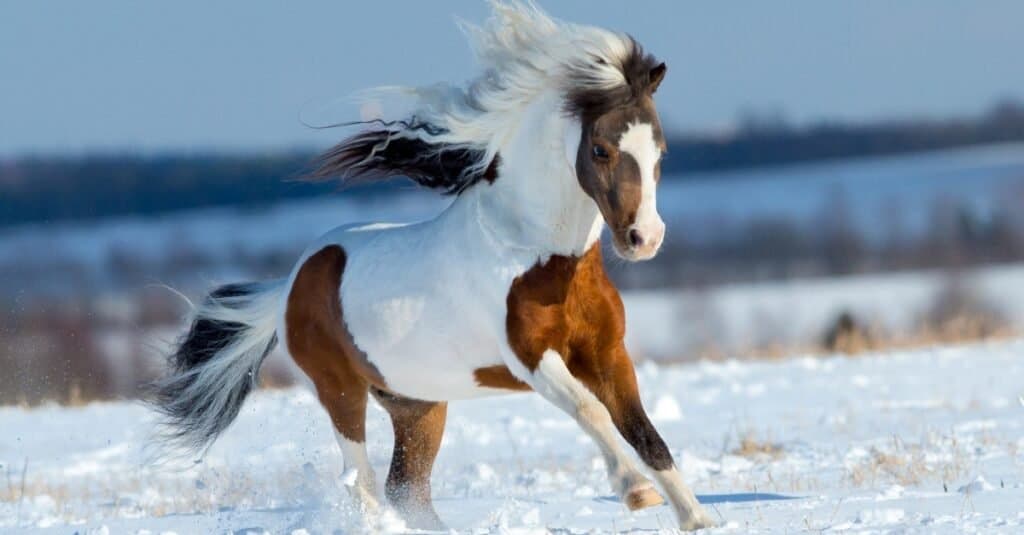
Modern miniature horses are bigger than horses that lived 50 million years ago.
©Alexia Khruscheva/Shutterstock.com
The first horses evolved in North America around 50 million years ago. These early horses, like the Hyracotherium breed, were small creatures with short legs and long bodies. They would have been the size of a modern-day house cat or dog.
Over time, horses began to evolve and change. They became larger, and their legs became longer. This change is due to the need to travel long distances over open grasslands. The long legs of these horses helped them to move more quickly and cover more ground.
Today, there are various horse breeds, ranging in size from the tiny Falabella horse (one of the smallest horses in the world), which stands just over two feet tall, to the giant Shire horse, which can reach a height of over six feet.
3. Horses were once extinct in North America
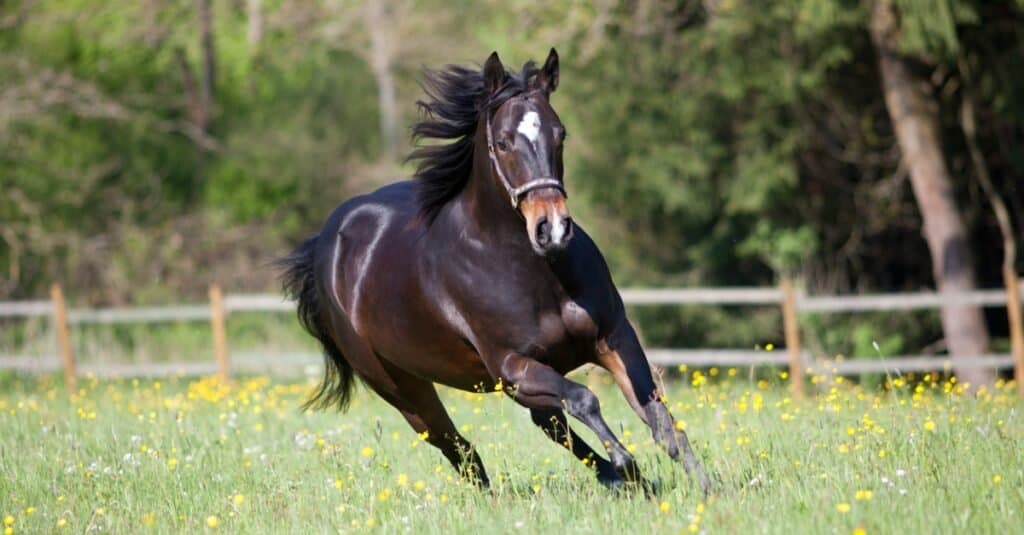
North American horses were extinct 10,000 years ago.
©iStock.com/anjajuli
The horse is an iconic symbol among North American animals, but it is not a native species to the continent. Horses went extinct in North America around 10,000 years ago. They only re-appeared when Europeans brought them over during the Colonial era.
What caused the extinction of horses on this continent is still up for debate, but changing climates and landscape patterns during the late Pleistocene period are likely culprits. As the climate grew warmer and drier, many forests and grasslands that horses depended on for food began to disappear. Additionally, large predators like lions and dire wolves that hunted horses also went extinct around this time.
While the re-introduction of horses by Europeans had a profound impact on the development of the American West, it’s important to remember that these animals are not truly native to the continent. So when you see a horse grazing in a field or running free on a range, take a moment to appreciate their long journey to get here.
4. Horses can communicate with humans through symbols
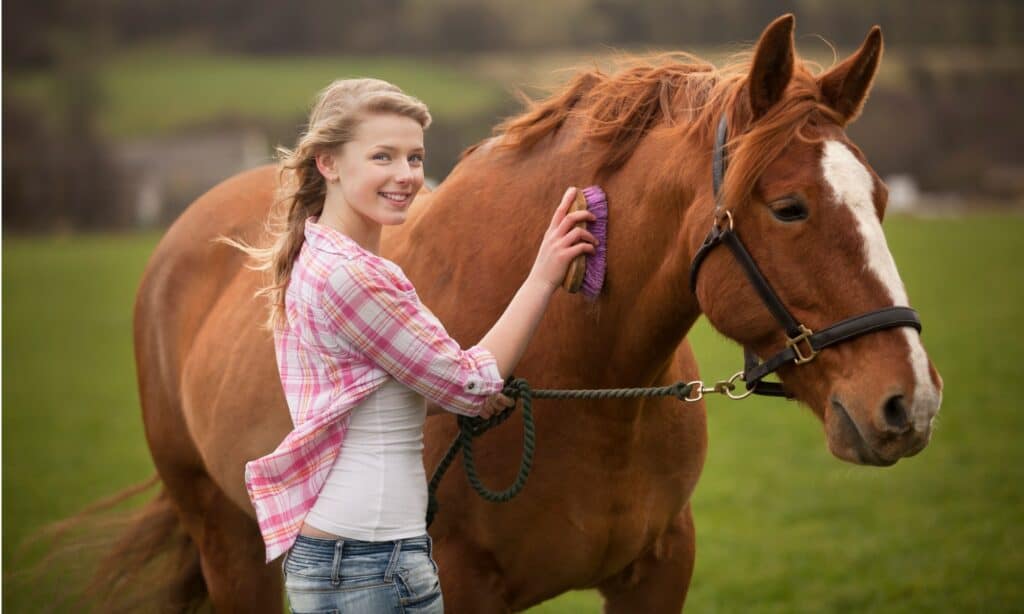
Studies show that horses can be trained to communicate with humans through symbols.
©iStock.com/Leon Harris
The researchers of a 2016 study published in Applied Animal Behaviour Science proved that horses could use symbols to communicate. For example, horses in the study learned to touch their hoof to a symbol board for a blanket when they wanted a blanket from their handler.
Since this study, more horses are learning to communicate with humans by pointing to symbols. For example, a horse might point to a symbol that means “food” if it is hungry. Or a horse might point to a symbol that means “water” when it is thirsty.
Communicating through symbols allows horses to tell us what they want or need. It also allows horses to share their thoughts and feelings with humans. This type of study is still new, and researchers are learning more about how horses use symbols to communicate every day.
5. The tallest horse on record stood over seven feet high
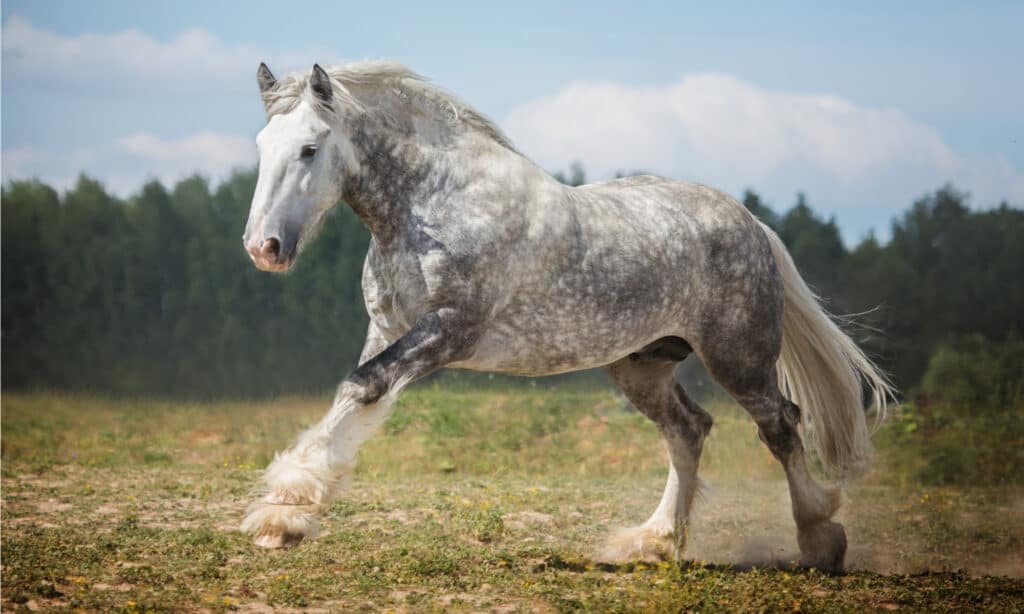
Shire horses are some of the largest horses in the world.
©Alla-L/Shutterstock.com
The tallest horse on record was a gentle giant named Sampson, whose name later changed to Mammoth. Sampson was 21.2 1/2 hands high or 7 feet and 2.5 inches (2.19 m) tall. He was a Shire breed horse and lived in the early 19th century. Shire horses are some of the tallest horses in the world.
Sampson was also the heaviest horse on record, weighing in at an estimated 3,360 lb. or 1,524 kg.
Sampson was born in 1846 in England. He eventually came to the US, where he was a sideshow attraction. People came from all over to see this massive horse, and he even met President Abraham Lincoln.
Sampson died in 1878 at the age of 32, but his legacy continues as the tallest horse on record.
6. Horses breathe only through their noses

A horse breathes through its nose, but not its mouth.
©horsemen/Shutterstock.com
The horse is an obligate nose breather, which means it breathes through its nose but not its mouth. Therefore, if a horse’s nose is blocked, it cannot breathe and eventually dies.
Horses cannot breathe through their mouths because the epiglottis (cartilage flap) attached to the upper airway of their mouth presses against the soft palate and blocks airflow. For this reason, horses only breathe through the nasal passageway.
Horse caregivers should pay close attention to a horse’s nostrils to monitor its health. Flared and sometimes foaming nostrils are signs of distress that could indicate a horse has developed colic.
Colic is very painful and a leading cause of horse death. There are many different types of colic, but the most common type is gastric distention. This type of colic is when the stomach gets filled with gas and expands. Colic can develop if the horse overexerts through strenuous exercise, overeats, or if they eat something that doesn’t agree with them. If the stomach gets too full, it can put pressure on the lungs and make it hard for the horse to breathe.
How do you know if a horse has colic?
Colic can be very painful, and it can be hard to tell if a horse has it. In addition to flared nostrils, the most common signs of colic are restlessness, sweating, kicking at the belly, pawing at the ground, getting up and down frequently, and looking back at the abdomen.
Another way to watch for colic is to check horse poop for a yellowish coating of mucus. The presence of mucus in horse feces is often a symptom of digestive issues like colic.
How do you prevent a horse from getting colic?
Though some cases of colic in horses aren’t preventable, there are steps you can take to lower colic risk. The most important thing is ensuring your horse has a good diet. Horses should eat hay or grass and have a small amount of grain. Avoid feeding horses over sandy areas so that sand doesn’t mix with their food. And make sure that horses always have plenty of fresh water to drink.
Bring hay and water for the horse to eat and drink if you’re going on a long ride. You should also plan what to do if the horse develops colic. Also, know how to identify colic signs and when to call the vet. With some preparation, you can help prevent colic and keep your horse healthy and happy.
Check out our pet horse guide for more tips on taking great care of horses!
7. Horses have excellent hearing and 10 muscles in their ears
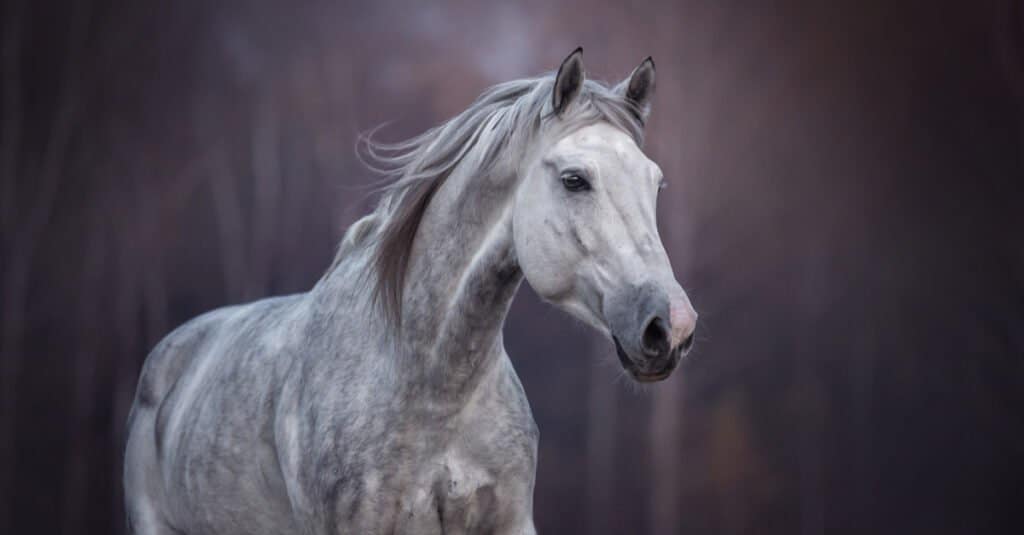
A horse has incredible hearing and range of motion in its ears.
©Osetrik/Shutterstock.com
Horses have excellent hearing and 10 muscles in their ears for a number of reasons. First, horses have evolved to have very keen senses to help them avoid predators. Second, horses are herd animals, and good hearing helps them stay aware of the location and activities of other herd members. Finally, horses are very social animals, and good hearing allows them to communicate with each other.
The ten muscles in their ears help horses to move their ears in all directions, which allows them to better locate the source of sounds. In addition, they allow horses to rotate their ears 180 degrees.
By comparison, horses have a lot more muscles in their ears than humans do. Humans have only three muscles inside their ears — the anterior, superior, and posterior auricular muscles. Tell your science teacher you learned that fun fact by reading animal articles. You’re welcome!
8. Horses have the biggest eyes of all land mammals
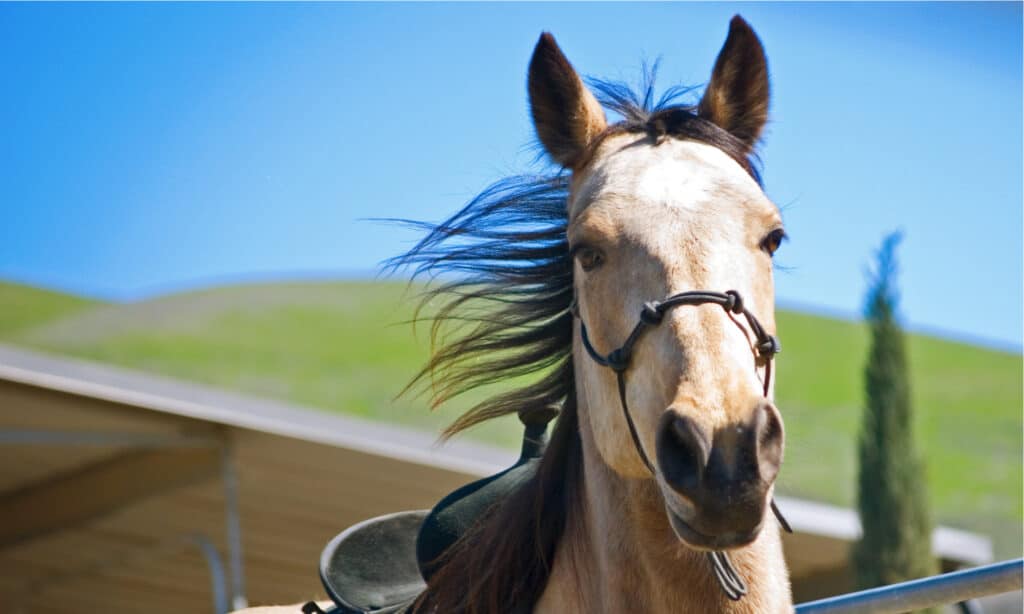
Compared to other land mammals, horses have the biggest eyes.
©Horse Crazy/Shutterstock.com
No other mammal living on the land has eyes as big as a horse. And horses need those huge eyes for great vision and better safety.
A horse’s eyes on the sides of its head give it a wide field of view. This allows horses to see predators and other dangers quickly. Horses also have excellent night vision. In addition, their eyes are sensitive to movement, so they can see even the smallest changes in their environment. A horse’s keen eyesight helps them avoid danger and find food.
Horse eyes have fewer color-sensing cones in the retinas than human eyes do. As a result, horses cannot see as many colors as humans can. Horses also have a hidden third eyelid, which helps to protect their eyes from dirt and dust.
9. Horses have up to 400,000 possible blood types
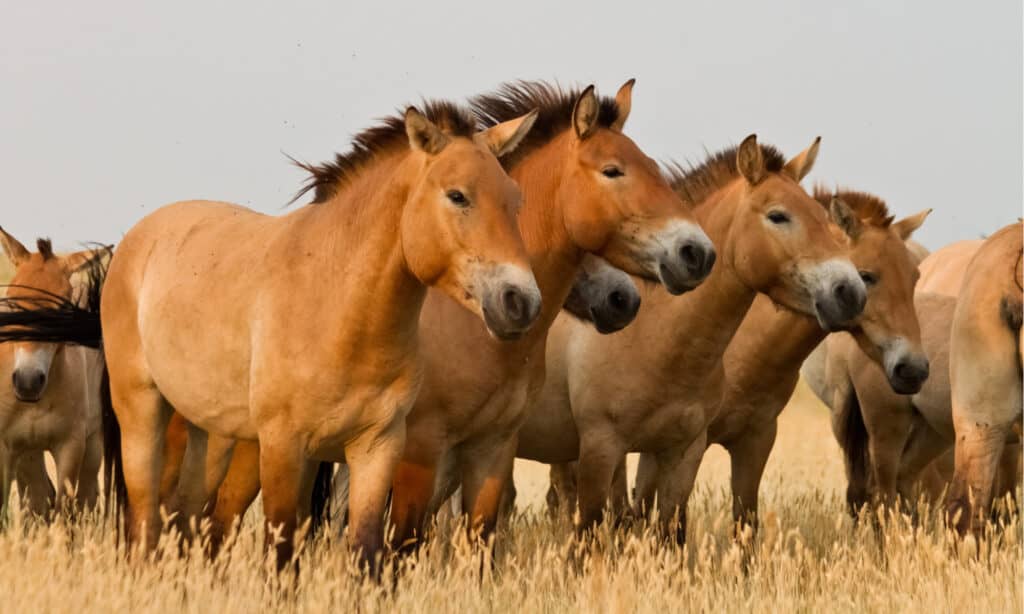
Because horses have up to 400,000 potential blood types, it’s difficult to find a perfect match for horse blood transfusions.
©Yantar/Shutterstock.com
You read that right — horses have 400,000 possible blood type combinations! That’s because horses have eight blood groups with 30 potential factors (red blood cell antigens) that create up to 400,000 unique combinations of blood types. For this reason, it’s often difficult to find a quick blood donor match for a horse in emergencies.
The eight major equine blood groups are A, C, D, K, P, Q, U, and T. Humans have only four major blood groups: A, B, AB, and O.
Unfortunately, a horse’s red blood cells don’t store well for the long term. As a result, blood transfusions for horses rarely come from an equine blood bank with donor blood types already identified.
It’s important to determine a horse’s blood type and locate possible blood donor horses nearby before emergencies happen, when possible.
10. Horse heights are measured in hands
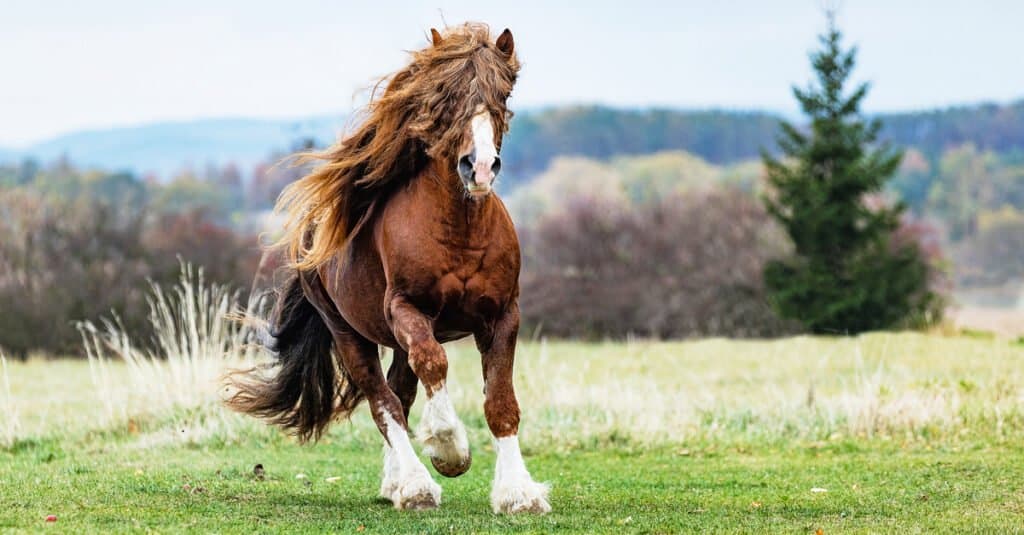
Horses aren’t measured by feet. They’re measured in “hands.”
©Nadezda Murmakova/Shutterstock.com
When you measure the height of a horse, use your hands! Well, only if your hands are four inches long. A “hand” is a simple unit of measure that equals four inches. Back before manufactured measuring devices were standard; horses were measured for sale or trade by how many hands high they stood from the ground.
The average horse is about 14.2 hands high, about 58 inches, or 4 feet 10 inches tall. So, if a horse is 14 hands high, that means it is 56 inches tall (14 x 4 = 56). The height of a horse can range from about two hands (8 inches, or 20 cm) for a miniature horse to about 7 feet (84 inches, or 213 cm) for a draft horse.
Until his death in 2021, the tallest living horse was Big Jake, a Belgian gelding measuring 20 hands 2.75 inches (82.75 inches, or 210.19 cm).
Horses are incredible Mammals!
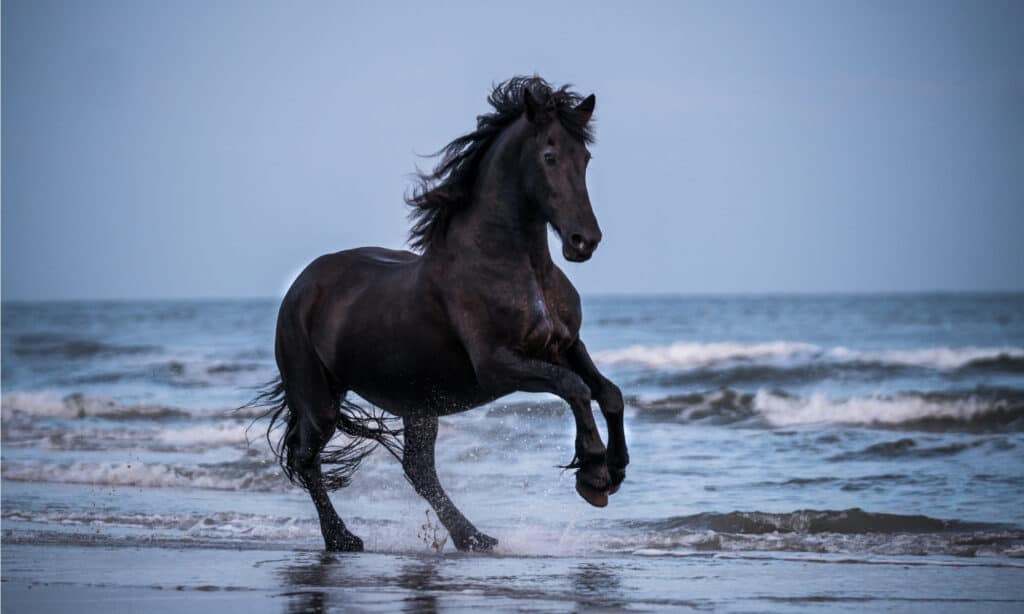
Horses are fascinating animals and beloved worldwide.
©Kira Felicitas/Shutterstock.com
Horses are magnificent creatures with fascinating anatomy and abilities. They’re intelligent mammals with compelling history and beloved by people all over the world. So, we hope you approach horses with new insight and respect now that you know these 10 incredible horse facts. But be sure to approach them cautiously because, with their unique eyes and ears, they can see and hear you from quite far away!
Do you love horses? Test your equestrian knowledge with our horse quiz!
The photo featured at the top of this post is © Anaite/Shutterstock.com
Thank you for reading! Have some feedback for us? Contact the AZ Animals editorial team.





